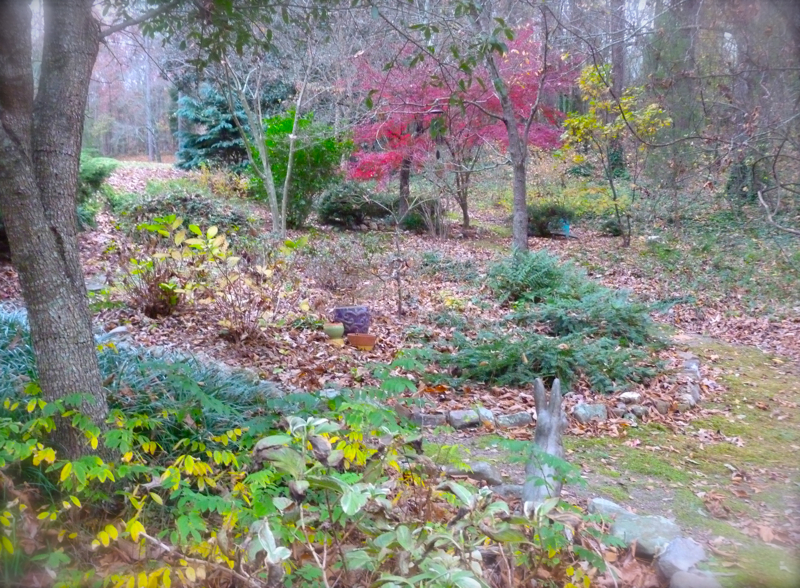Burford Holly: a Low Maintenance Classic
 Tuesday, December 13, 2011 at 5:01AM
Tuesday, December 13, 2011 at 5:01AM With over three acres of land and a full time job, I am all about low maintenance gardening. I long ago realized that shrubs give me the most impact for my efforts, and hollies are at the top of the list for ease of care. Ilex cornuta 'Burfordii' is a Chinese holly that has been around a long time. Its favor has waned as trendier garden fashions have come and gone, but I think it deserves new recognition.
Burford holly has glossy, evergreen leaves with pointed tips. One does need to be careful of those sharp tips when pruning! The shrub produces creamy white flowers in spring. The small blooms may not be very noticeable to humans, but the bees love them. I am amazed by the dozens of bees that cover the shrub when it is in bloom, buzzing about and becoming drunk on the nectar. The flowers are followed by bright red berries. The characteristic that first drew me to Burford holly is that, unlike many other hollies, the shrub doesn't require a male pollinator for heavy fruit set.
The flowers are followed by bright red berries. The characteristic that first drew me to Burford holly is that, unlike many other hollies, the shrub doesn't require a male pollinator for heavy fruit set. Birds, including robins, cardinals, and sparrows, will eat the berries in late winter after they have softened. Birds also consider Burford holly a choice nesting site.
Birds, including robins, cardinals, and sparrows, will eat the berries in late winter after they have softened. Birds also consider Burford holly a choice nesting site.
I lightly prune my Burford holly once a year in December and use the cuttings, laden with berries, for Christmas decorations. Heavier pruning should wait till early spring, right before new growth begins. These shrubs are often pruned into formal shapes or used as hedges, but I have let mine keep its natural form. Interestingly, the branches of my particular plant have something of a weeping habit, which I think is beautiful. A recent photo of Burford holly in my garden
A recent photo of Burford holly in my garden
There are two forms of Burford holly, and one should be careful to purchase the best one for the location. The standard Burford holly will grow at least 15 to 20 feet high and wide, and if the lower limbs are removed, it will make an attractive small tree. The dwarf form, which is what I have, will be smaller, 6 to 10 feet in height and width. Note that the dwarf form is still a large shrub. Do not plant it as a foundation shrub in front of a window, as you will hate it when you are constantly having to prune the branches with their sharp, pointy leaves! I have seen dwarf burford holly advertised as a slow grower that will grow to only 2 to 3 feet. This has not been my experience, so it must be a different cultivar. Be sure of what you are getting.
Burford holly will grow in full sun to partial shade in hardiness zones 7-9. It is heat and drought tolerant and pest and disease resistant. Scale insects can sometimes be a problem, producing a black, sooty mold. Fortunately, my plant has never been affected. Though it will adapt to a variety of soil types and pH levels, it likes well drained, acidic soil. I fertilize mine only once a year, in early spring, with an organic fertilizer for acid loving plants.
Low maintenance gardening is first dependent on planting the right plant in the right place. If that rule is followed with Burford holly, it should provide you with years of pleasure, as it has done for me.
 Permalink
Permalink 




